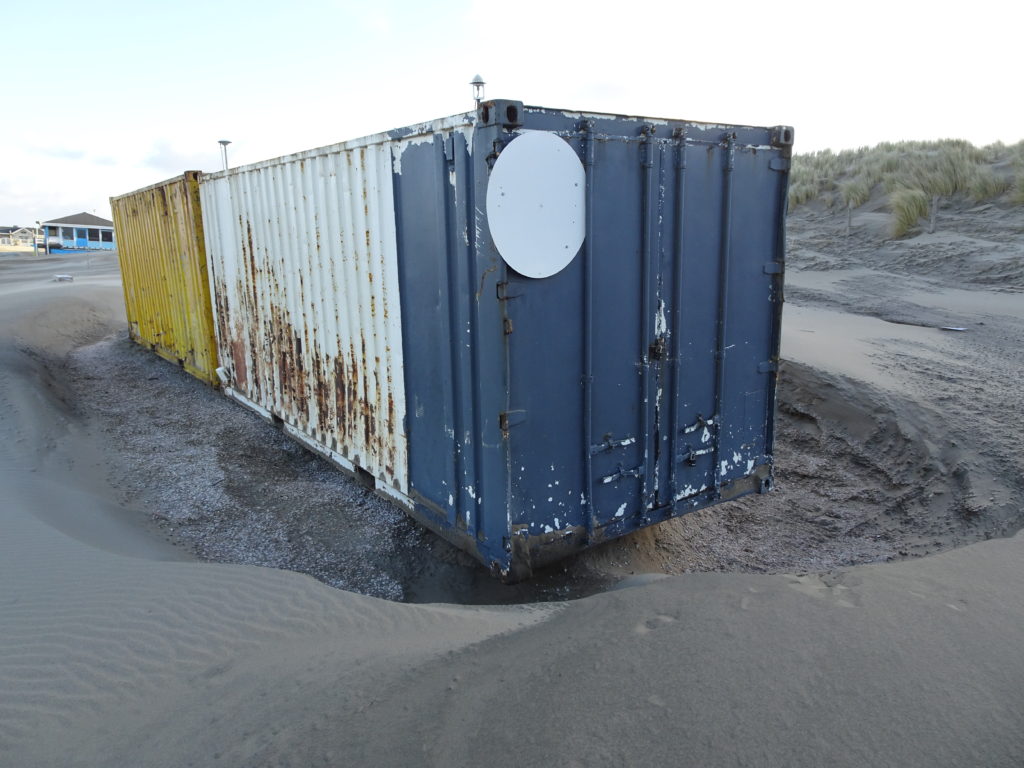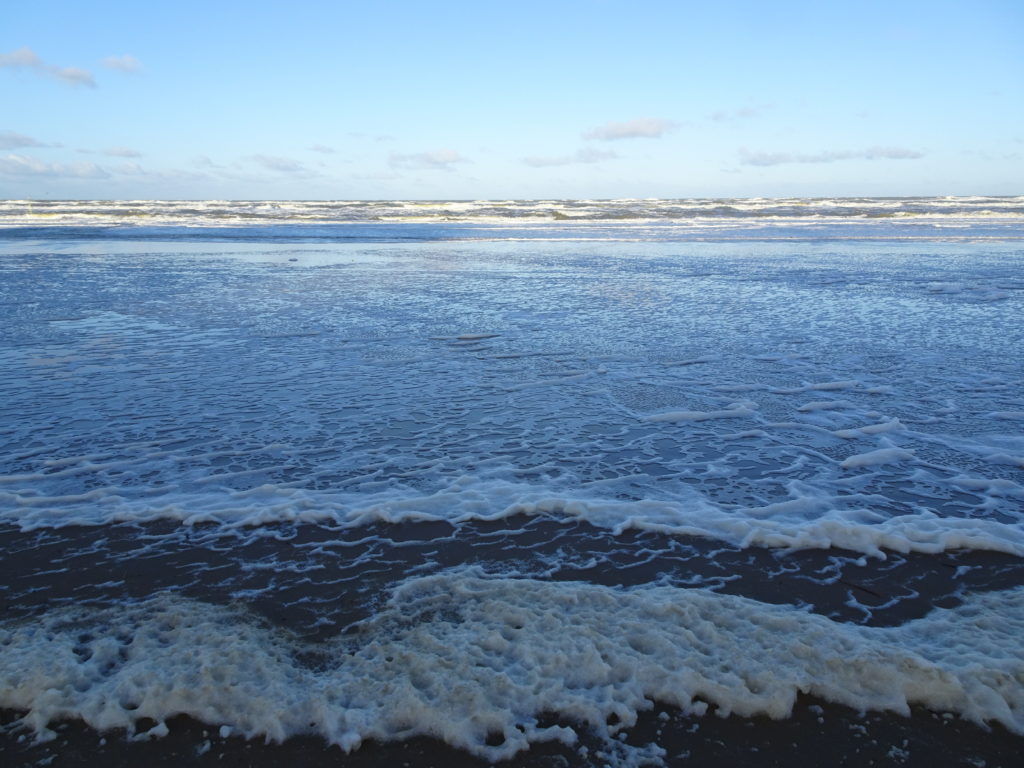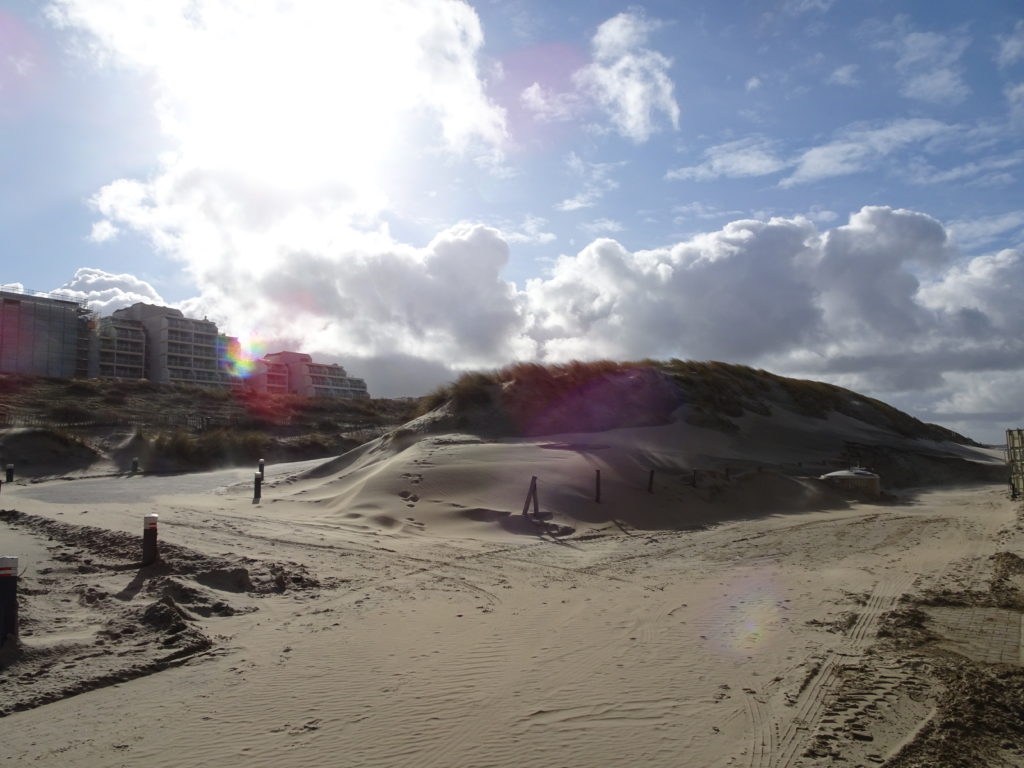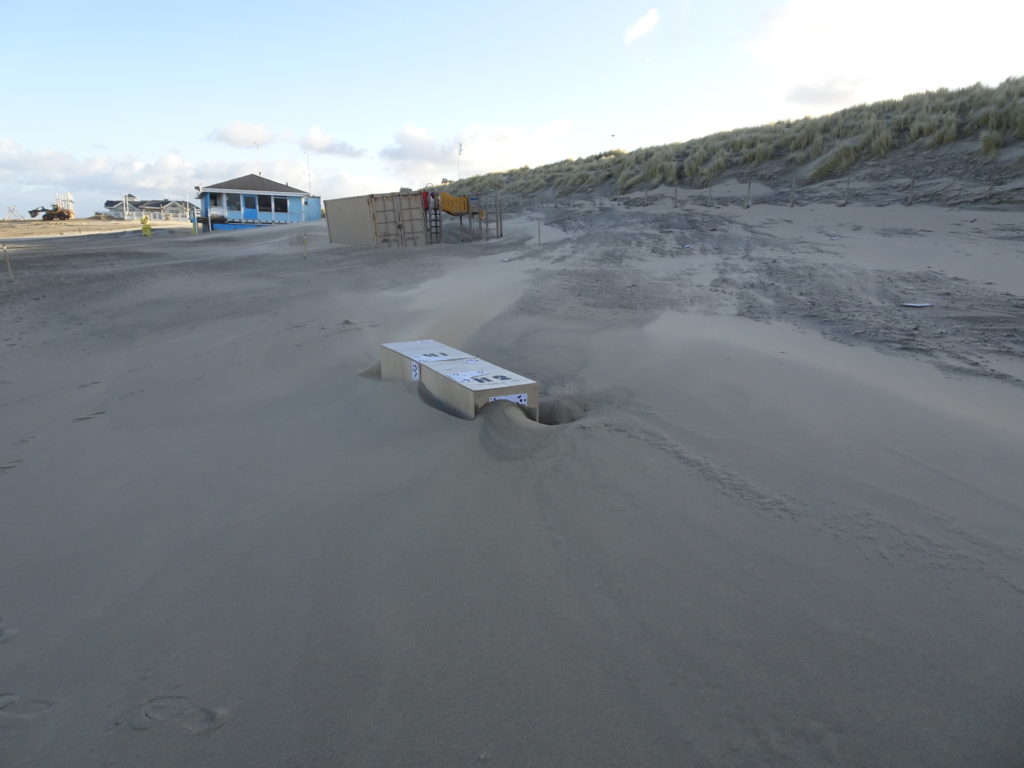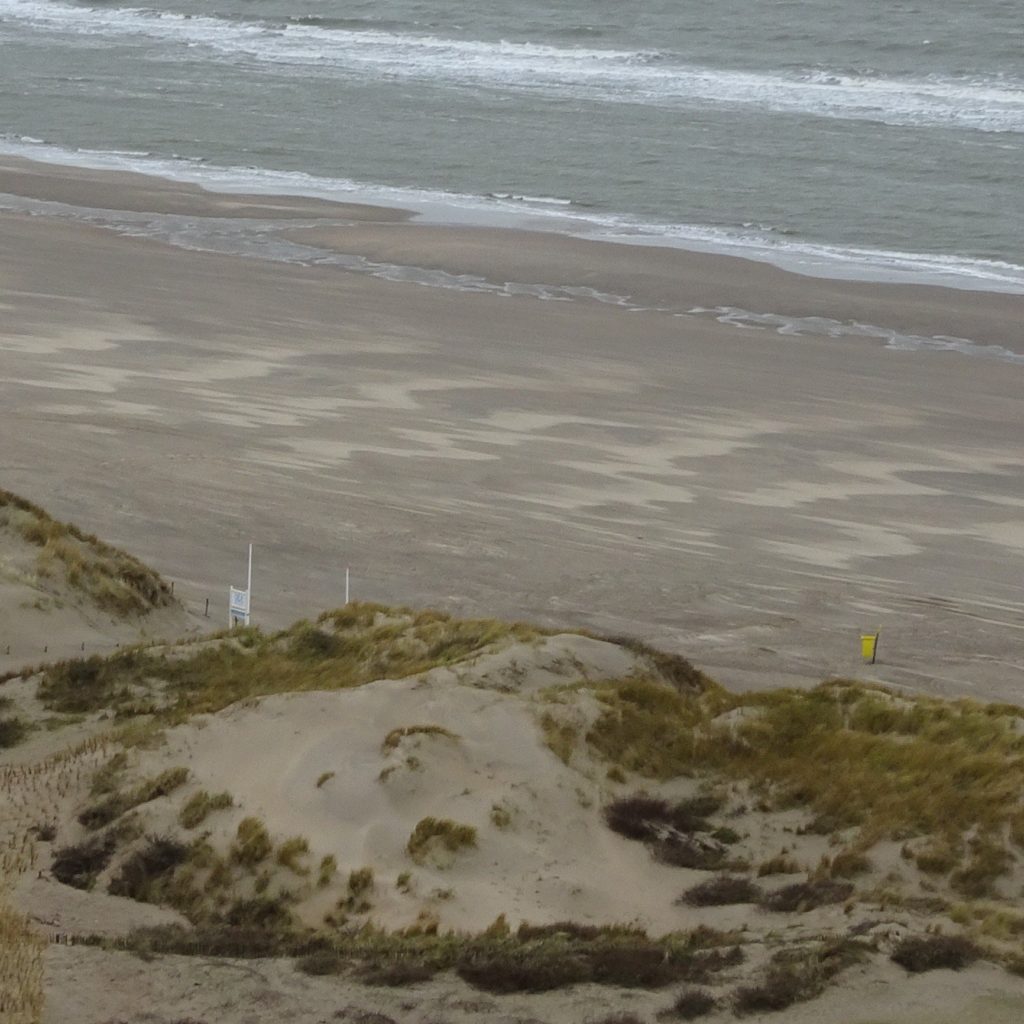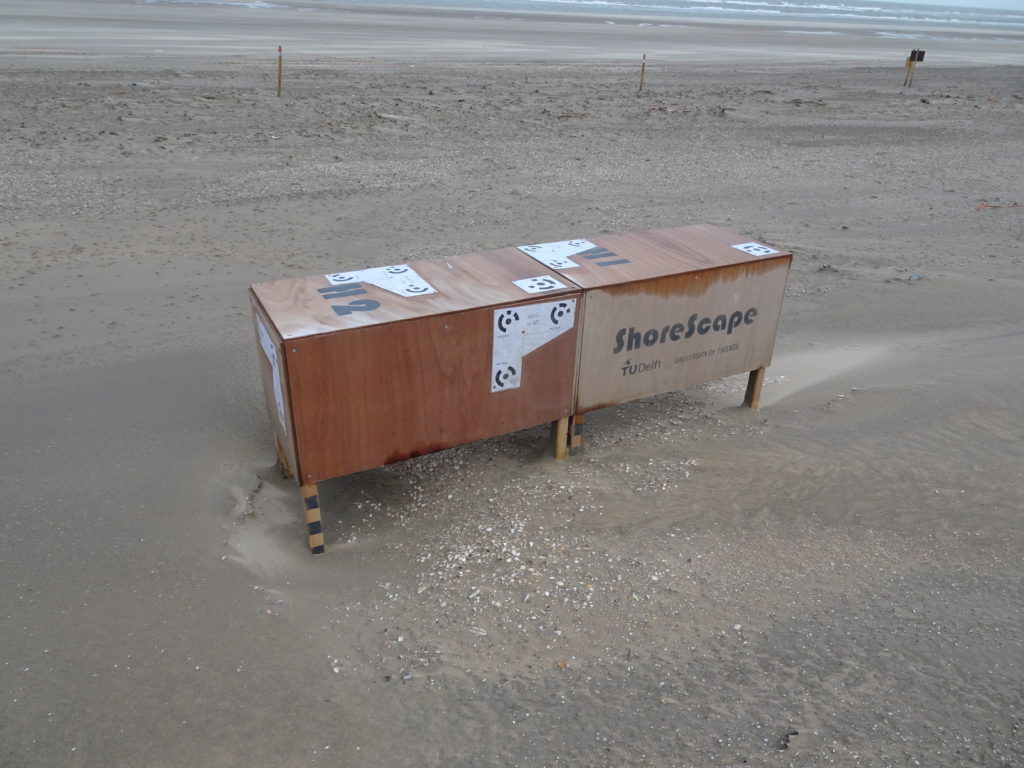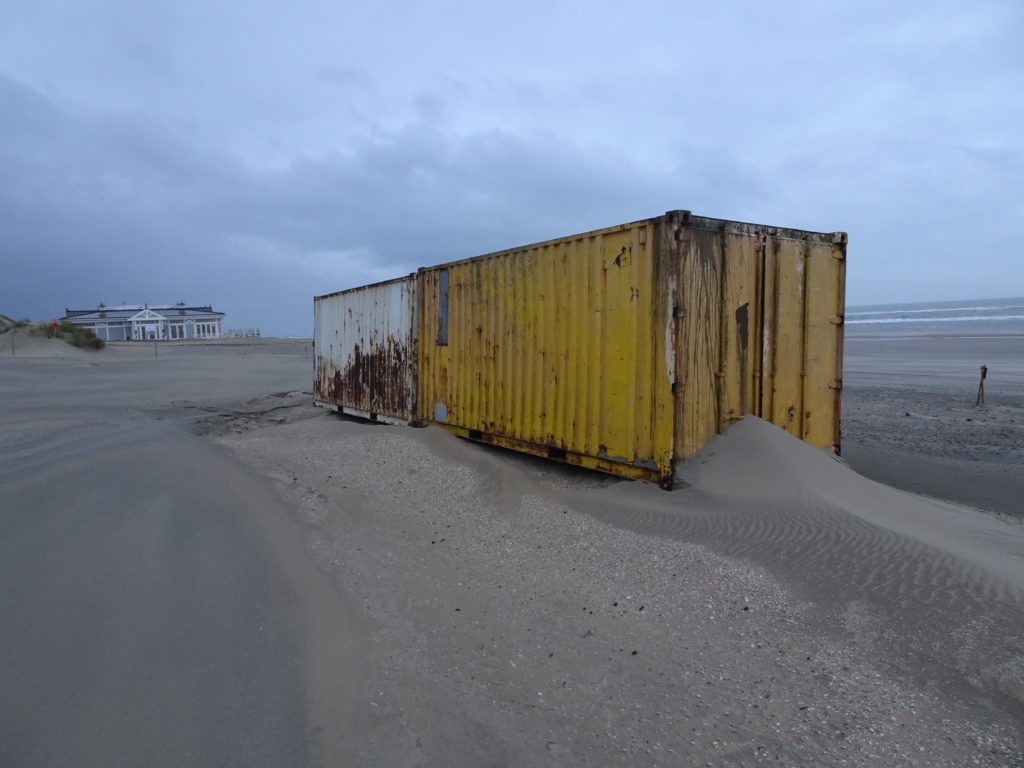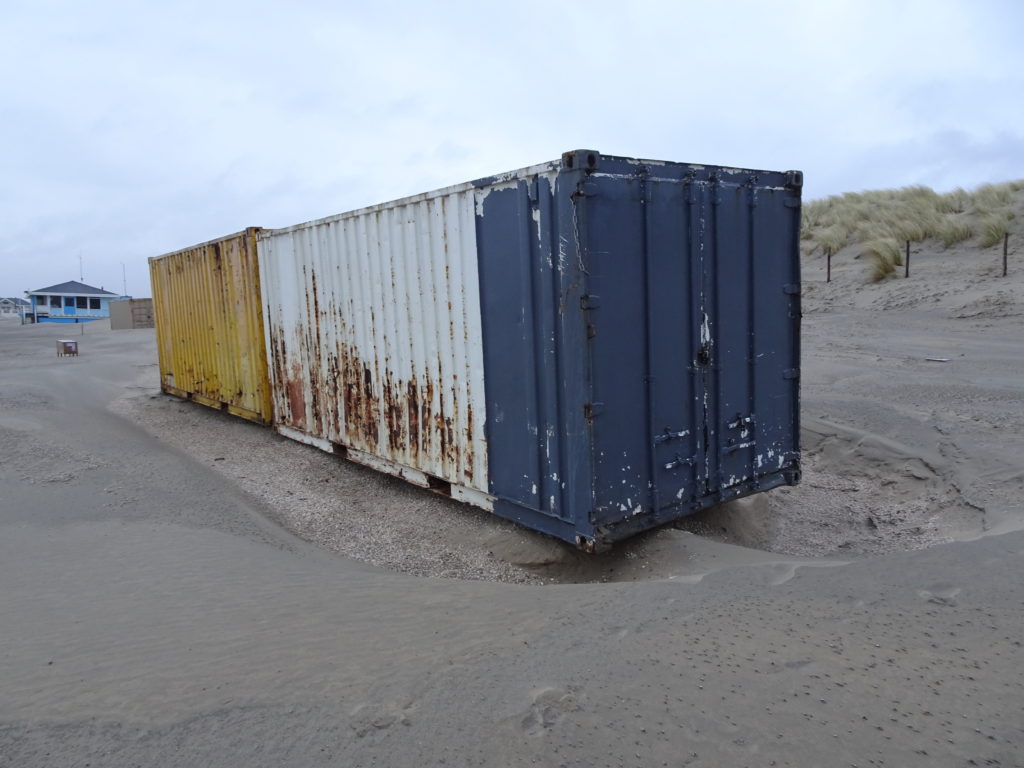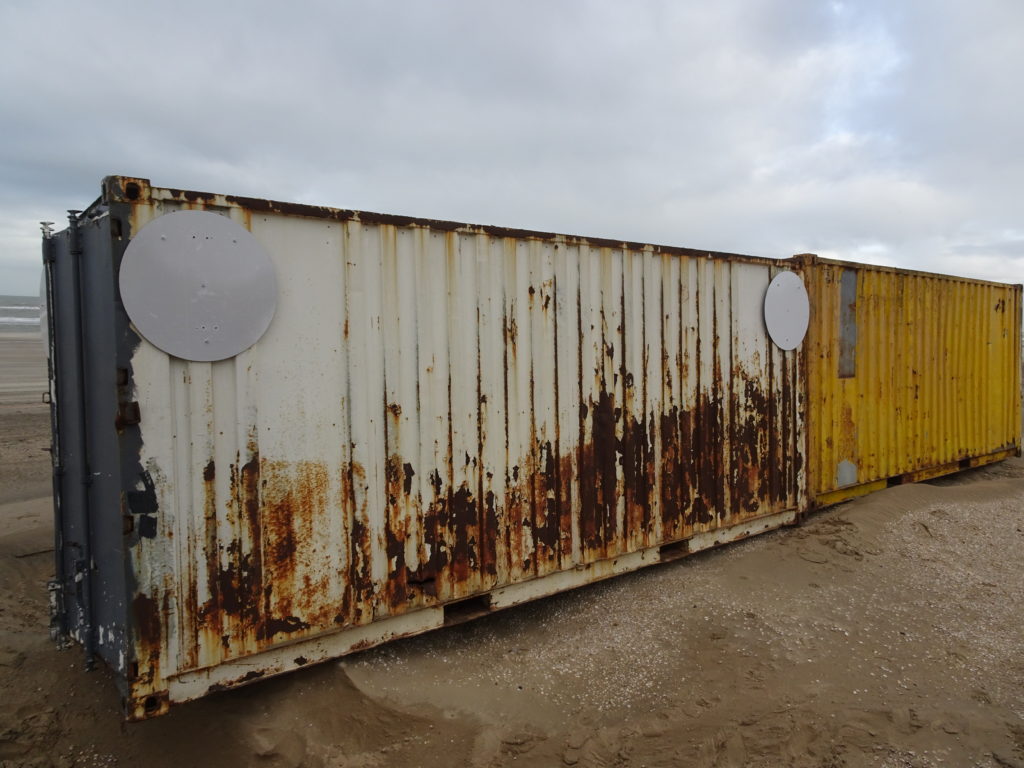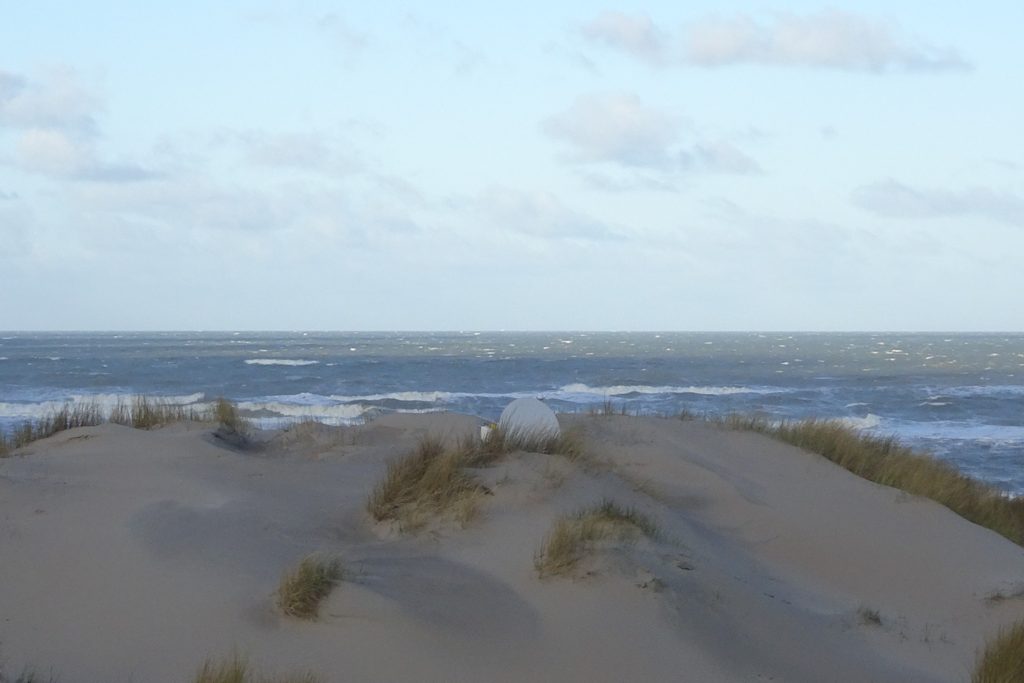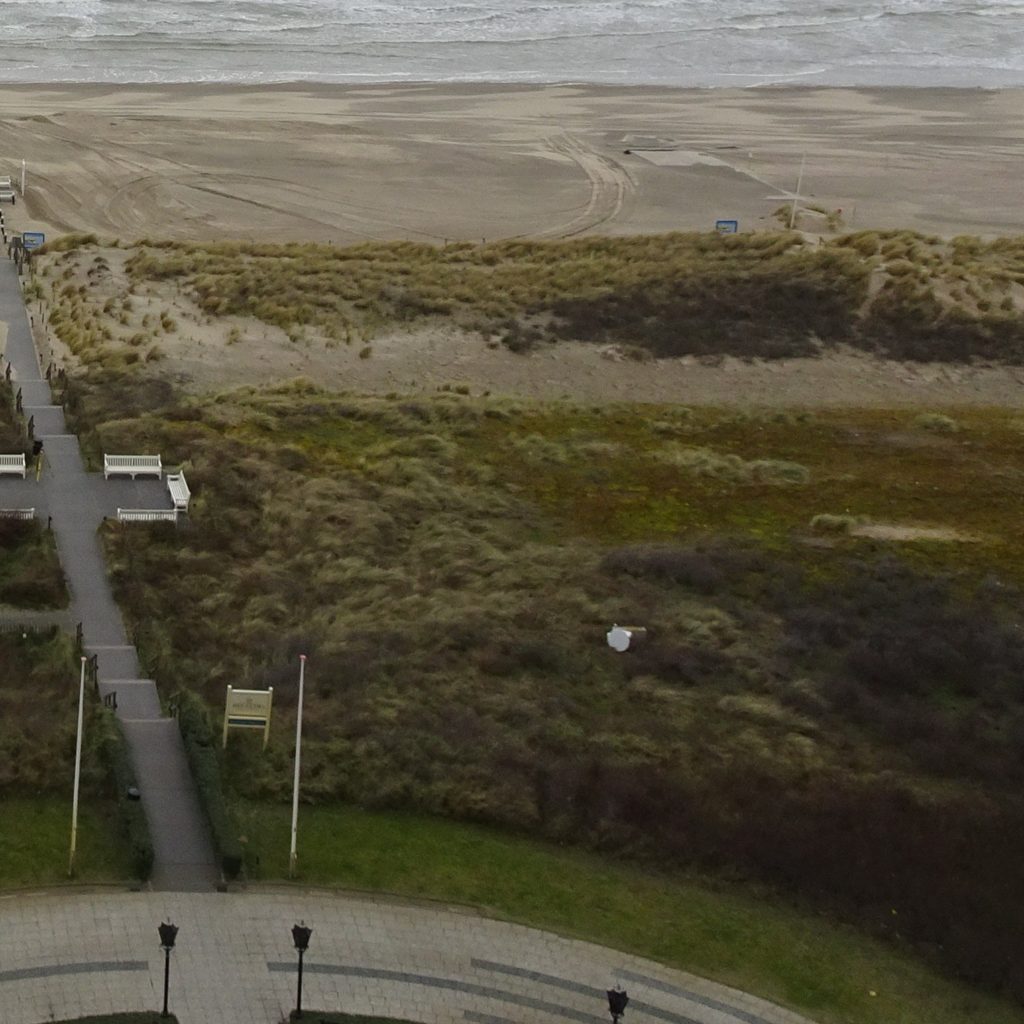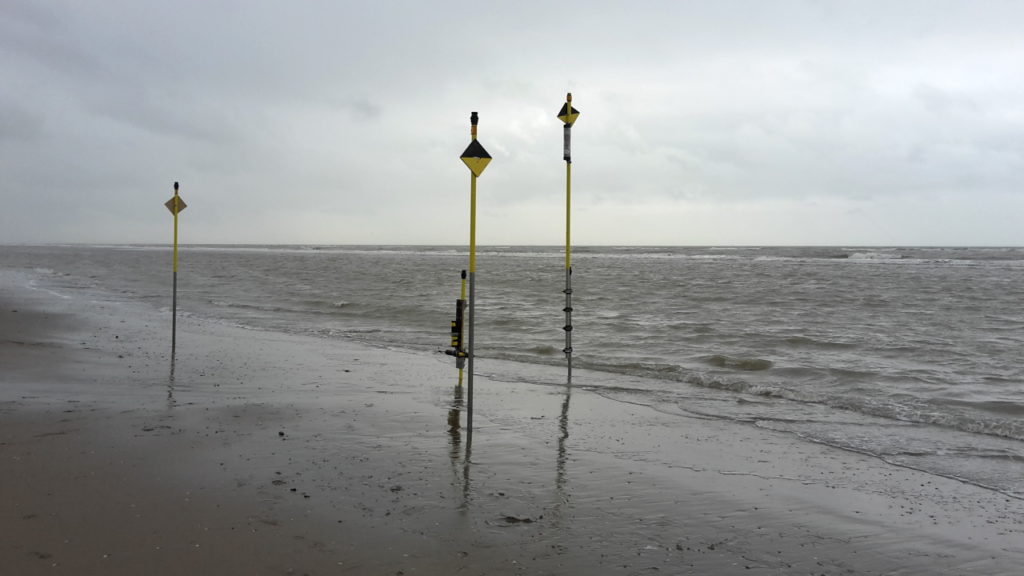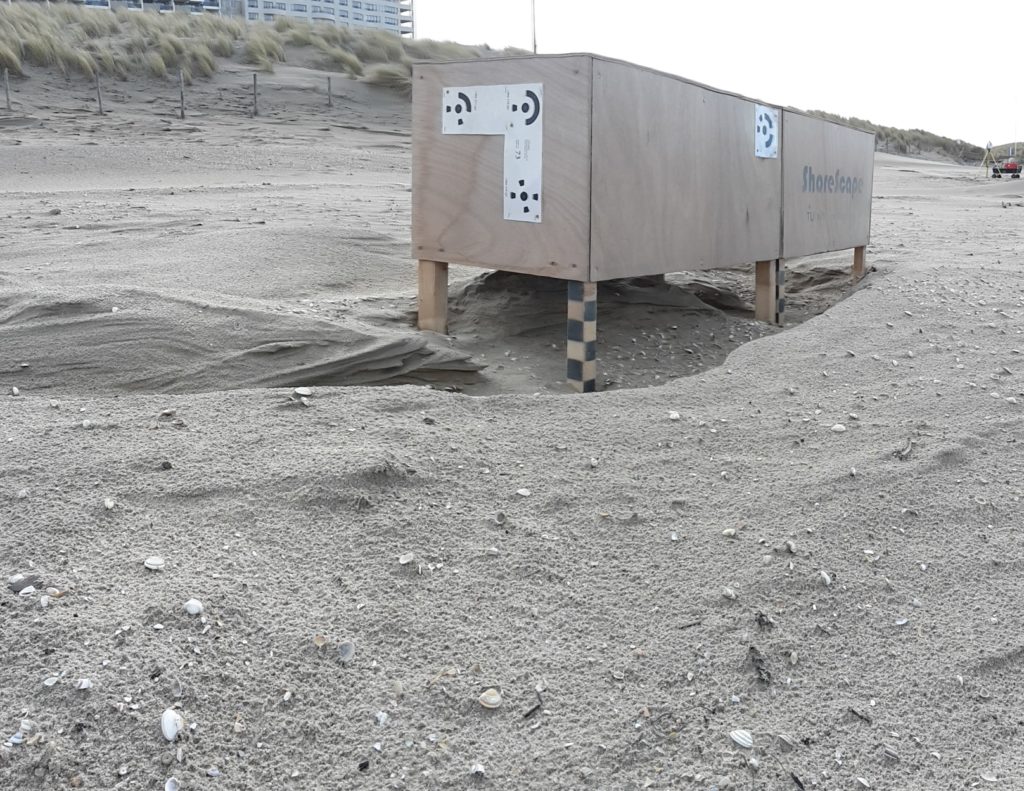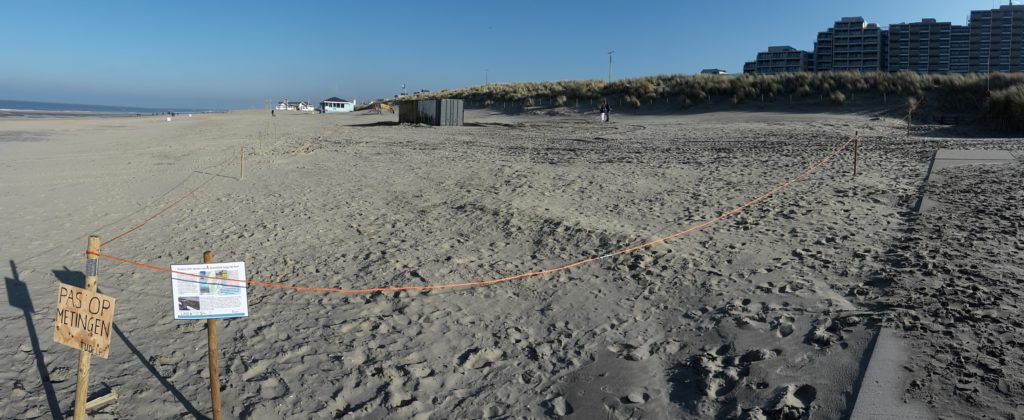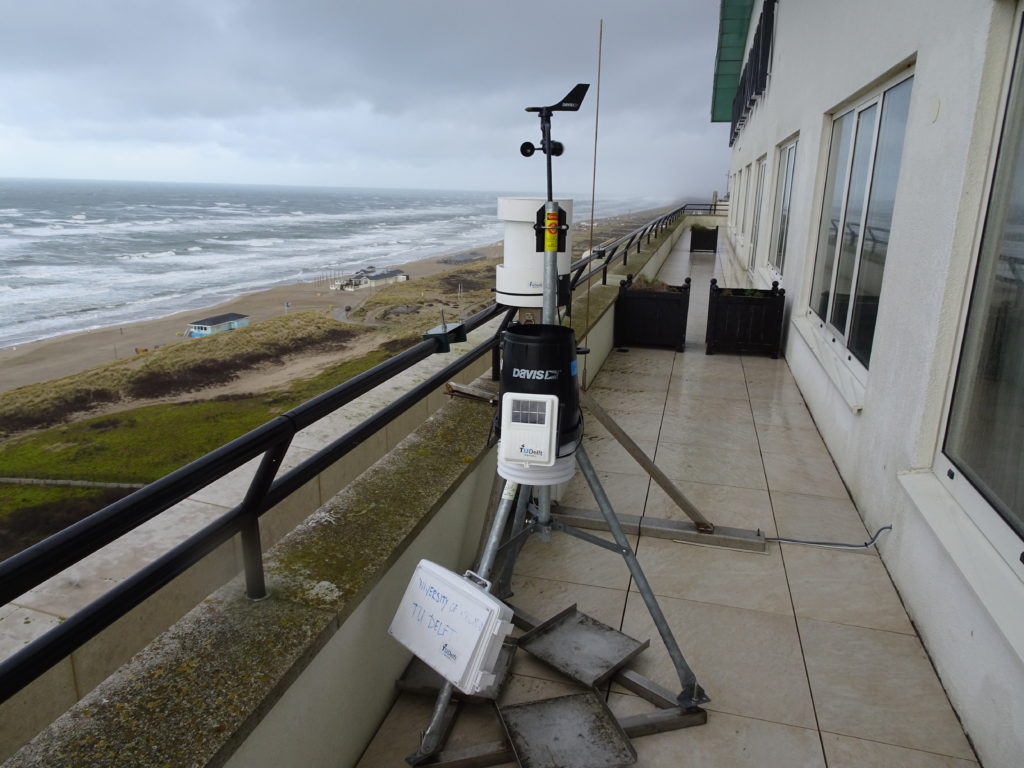Thanks to the closure of the Delft University of Technology because of the Corona virus outbreak, we stopped recording data with the weather station and removed all reflectors. We have data on the reflectors during four weeks, which is enough to evaluate the stability and potential error sources. Some last scans with the mobile laser scanner were performed on 14 March. Measurements with pressure sensors and sampling with the sand scraper are ongoing, as long as permitted.
Author Archives: admin
TU Delft news site Delta reports about ScanEx
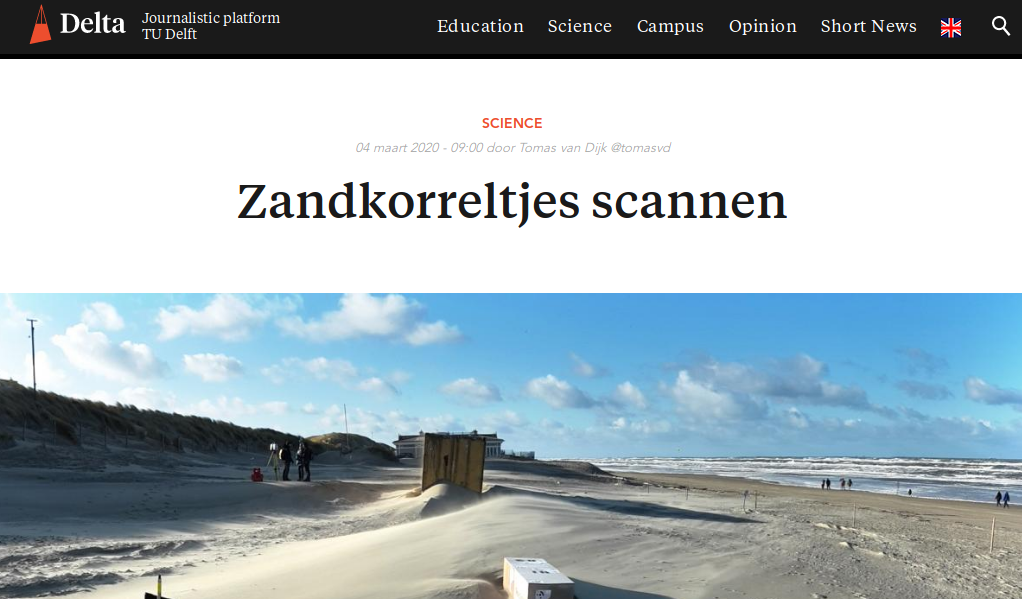
The news platform Delta of the TU Delft reports about our fieldwork campaign ScanEx. The full article can be read here.
The storms continue
The continuing storms show huge effects on our containers and model containers. A lot of sand is moved around and constantly creates changing shapes and erosion around them. The access road to the beach needs to be cleared daily and the works as well as the sand accretion cause a new shape of the neighboring dunes every time we come to the beach for measurements.
Effects of latest storms visible around shipping containers
We recorded wind speeds up to 12 bft in the first weeks of February 2020, the beginning of our fieldwork campaign ScanEx. The effects that the wind had on the beach, can clearly be seen around our shipping containers in the observation area. There has been (and continues to be) a lot of aeolian sand transport. The sand is blown away from the south side of the containers and accumulates on the north side. The two wooden boxes were placed directly on the sand before the storms. All sand from underneath was blown away and they appear more than 20 cm above the beach.
Reflectors installed on the containers and in the dunes
Several reflectors have been installed in the dunes and on the shipping containers on the beach. They will support the error analysis of our data from permanent laser scanning, allow calibration of our measurements and help with determining atmospheric effects on our measurements. The reflectors and supporting instruments have been provided and installed by DMT group and TU Freiberg.
Pressure sensors to measure waves installed
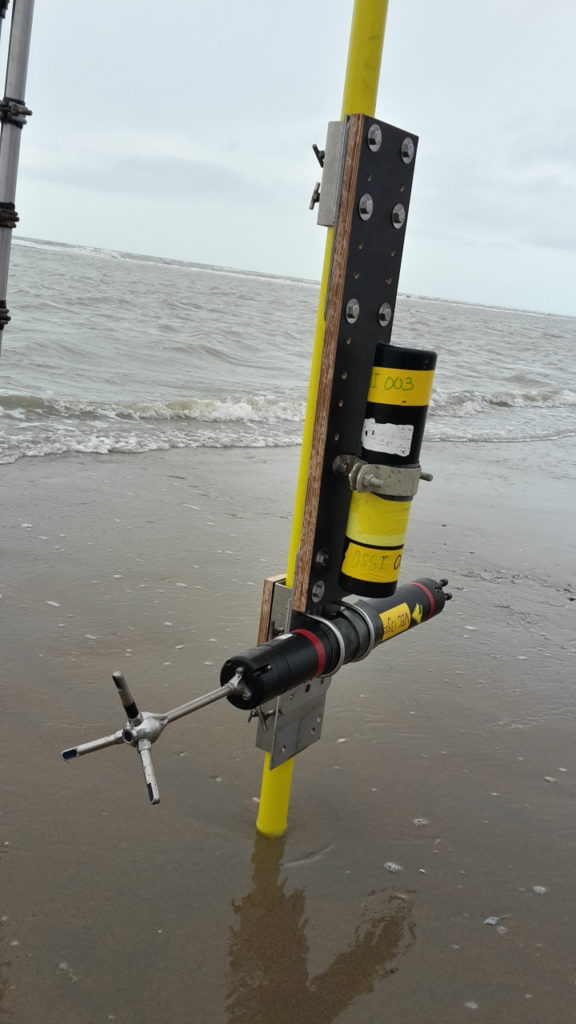
Next to our observation area on the beach, pressure sensors have been installed on large posts. With the help of these sensors the wave heights and wave lengths can be measured. This data will be used to accurately model how much sand is transported with the wave and tides towards the beach and from there towards the dunes. The combination of our laser scanner data with as many other data sources as possible gives a unique opportunity to study interactions between different influences on sand transport in our observation area and improve the knowledge of the ‘big picture’.
Participation of ShoreScape project with model containers
Scientists from the ShoreScape project placed two wooden boxes in a location close to our shipping containers. The boxes serve as models for the containers. Aeolian sand transport is observed both for the containers and around the boxes. This will give insights into the possibilities and issues of investigating and modelling buildings on the beach in smaller scales.
Container placed for observation of aeolian sand transport

For the ScanEx fieldwork we placed two shipping containers on the beach, just in time before storm Ciara hit. We are investigating erosion patterns around the containers as a model for buildings on the beach.
We are also interested in observing how much sand is transported towards the dunes and how much of it is blocked by our containers.
Weather Station next to laser scanner
To complement our measurements from permanent laser scanning we set up a weather station next to the laser scanner on the balcony of Grand Hotel Huis ter Duin. We are monitoring wind speed and direction as well as temperature and precipitation to investigate the effects of weather conditions on our measurements. The set-up was finished just in time before storm Ciara hit the coast on 09 February.
ScanEX 2020 appears in weekendkrant
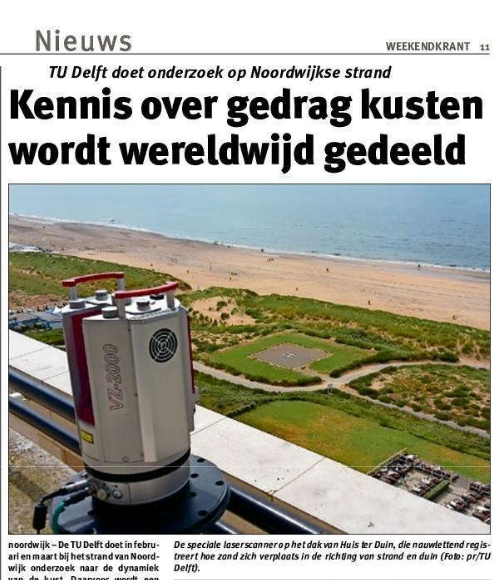
On 7 February 2020 the Weekendkrant of the region Bollenstreek reported about our fieldwork campaign. The full article can be read here.

